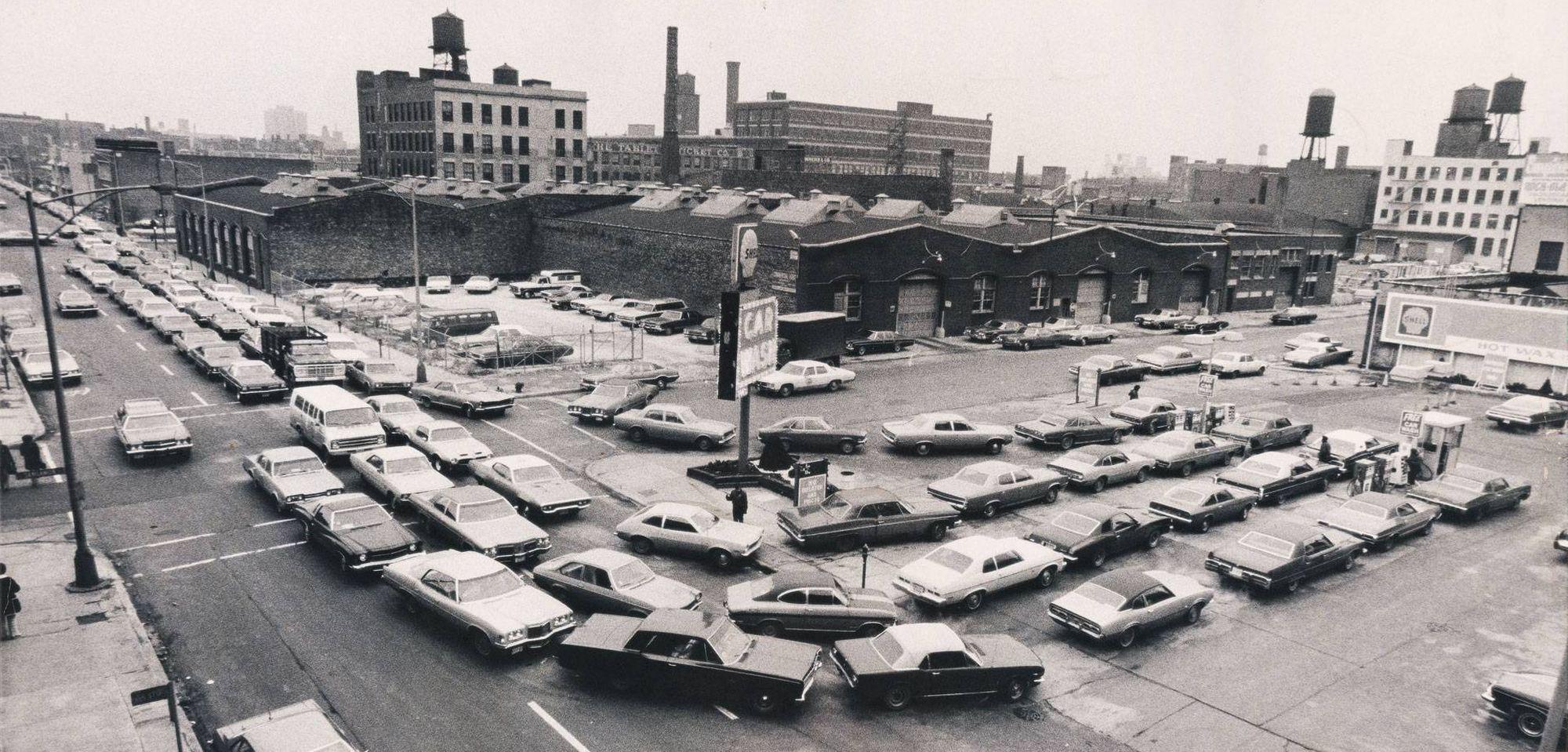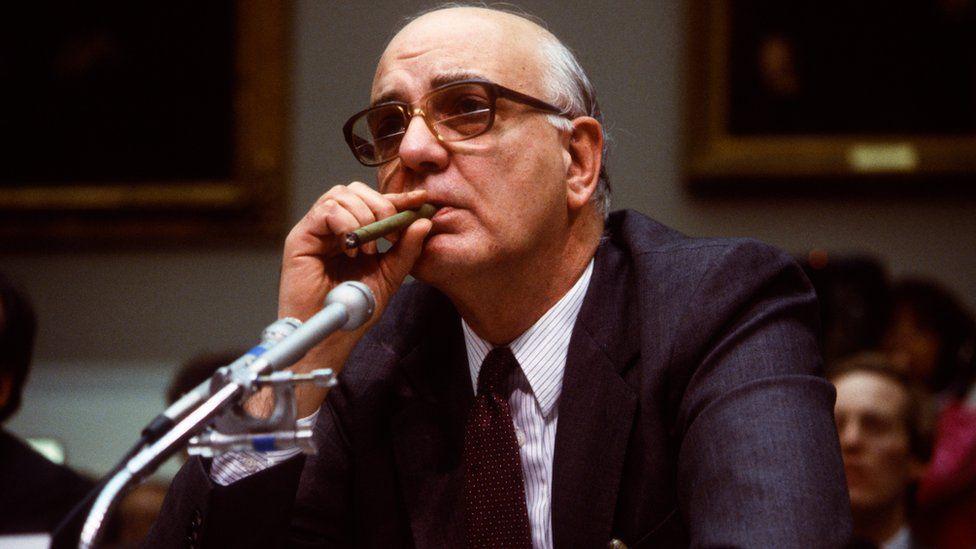Enjoy your Sunday read ! I did !
Bunker Mentality
For many of those following the writings of this “dithering old fool” that continues to hold an unfailing conviction in the strategic importance of gold and silver ownership in an otherwise out-of-control fiscal and monetary world, let me tell you a story about the 1970’s. I arrived in Saint Louis, Missouri in the late summer of 1972 at the start of a magical four-year career as a student athlete at one of the top undergraduate business schools in the country. Populated largely by Jesuit educators, it also had many non-Jesuit professors in the twilight of their business careers that bestowed impressive anecdotes upon the collective psyches of the student population. In fact, it was a wonderful, coffee-sipping, Camel non-filter-chain-smoking finance professor that stood in front of the class in old De Smet Hall one morning, tripping the light fantastic about the implications of Richard Nixon abandoning the gold standard the year before and how it was going to cause massive inflation. Within a couple of years, the U.S. was embroiled in a debilitating stagflation where the cost-push effect on consumer prices was causing serious discomfort resulting in labour union strife and stock market angst the likes of which created one of the longest and most damaging bear markets in history (the infamous 1973-1974 “bear”). In fact, one grizzled old sexagenarian that was a stockbroker for Bache Halsey Stuart in the 1970’s told me that at his Toronto office, which employed a couple of dozen salesmen (they call them “wealth advisors” today) all making fistfuls of money in 1972, they arrived at work one day in 1974 only to find desks and telephones gone, replaced with a row of rotary-dial payphones that the now “part-time” brokers could use during lunch hour breaks from their full-time cab-driving jobs.
1970’s Gas Lines
Even senior advisors at most brokerage firms today have no knowledge nor appreciation of what life is like in markets that operate without the safety nets provided by governments or government sponsored entities like the Federal Reserve or the Bank of Canada. “Long live FREE MARKET CAPITALISM!” shouts former Trump Advisor Larry Kudlow as young people watched in horror how the illicit profits generated “doing God’s work” (as Goldman Sachs’ CEO Lloyd Blankfein once described his firm’s mission) were classified as “private” until they blew up the banking system. It was at this exact point that the losses were magically “socialized” after which Kudlow was obligated to shift the narrative to “LONG LIVE FREE MARKET CRONYISM!”
In the 1970’s, the U.S. was trying to manage a crippling upward spiral in debt servicing costs caused by profligate “defence” spending during the Viet Nam war where the Fed monetized the cost of the U.S. military “offense” spending by printing money. What started off as a recession in 1973-1974 soon metamorphosed into a full-blown inflationary spiral and while most financial advisors were busy jamming low-yielding bonds into client portfolios, they did not fully grasp how a 5% coupon versus a 9% inflation rate could be harmful until their grandma’s grocery bill had suddenly gone up 75% in six months.
What the Millennial and Genexer investors fail to grasp is that the singular biggest driver for stocks since the bull began in August 1982 is a condition called “Goldilocks” – an economic parallel to the old fairy tale where a young girl tastes three bowls of unattended porridge with one too hot, one too cold, and the third “just right”. This allegory has survived for four decades with the American maestros relying on a ravaged middle class and cheap foreign imports to keep a lid on consumer prices while lowering borrowing costs to zero. Each stock market cycle which included sharp corrections like 1987, 1998, 2001, 2008, and 2020 have all been rectified with interventions and injections where liquidity got sprayed across the financial forest fire with the desired result being asset price inflation and stock market bliss. These rescues could never have happened in the 1970’s because of two very distinct differences: Babyboomers and inflation. The disinflationary bias that has allowed stocks to flourish for the past four decades was the direct result of credit creation that fostered growth in business investment which improved productivity which allowed non-inflationary growth as products came to consumers more efficiently. Today, credit creation is fostering growth in asset investment without productivity enhancements with the result being massive increases in everything.
Contrary to popular delusion, the pandemic is not the cause of soaring grain, metal, and lumber prices; “supply shock” is a fantasy used by Jerome Powell to facilitate his “transitory inflation” narrative. The similarities between the 1970’s and the 2020’s are strikingly obvious, but the pain of consumer price inflation is never appreciated fully by those that have benefitted from asset price inflation and when you look at the levels of incompetence in government responses to this “flu bug” circumnavigating the globe, the average worker that is no longer allowed to work has no money left and is soon to be deprived of his “stimmy”.
Never before have I seen a witches’ brew of social unrest and civil disobedience looming on the horizon than what I see today. The world needs a legion of Paul Volcker’s at the helm of fiscal and monetary navigation in order to protect the middle-class economies as opposed to the privileged class economies. The former thrives with business investment while the latter influences, bribes, and worships asset investment all financed by the credit creation machine, the global banking system or, as I prefer to call it, the politico-banco cartel.
The generational gap in understanding comes in the form of a loosely-used term called “inflationary expectations” and while the citizens of Zimbabwe, Venezuela, and Argentina have a superb, first-working knowledge of the perils of hyperinflation, the younger citizens of the West and predominantly the U.S.A. have never been exposed to anything resembling consumer price inflation despite having been spoon fed by the central bank a steady diet of asset price inflation since 2001. The fact that huge numbers of Americans are making more staying at home than they would taking minimum-wage, burger-flipping jobs is just another example of government teaching them about the meaningless origins of “money” and by demonstrating a total lack of respect for savings. The only “expectations” concerning inflation centre around the Divine Right of the Unemployed to be granted a rich person’s lifestyle by way of handouts and until this Aura of Entitlement is replaced with the good, old Christian work ethic, wage inflation is going to be engaged in a footrace to outpace the stimmy cheques in order to attract workers.
It has been said that “80% of inflation is comprised of inflationary expectations” but the reality is that portfolio managers the world over are not old enough to have experienced the Impact that expectations had on the global economy in the 1970’s. The trader that had forty successful trades in Avon Products in 1972 between $110 and $140 got crushed with the 1974 bottom at $18.50. (I believe that Tesla in 2021 is the Avon of 1973-74.)
You have to have worn bell-bottom blue jeans (and thought you looked really cool) at some point in your life to fully grasp the economic damage that was caused by soaring input costs (rising producer prices). The components that contribute to a 70’s-style outcome are seen everywhere today in consumer behaviour with housing once again on fire, rents on the rise, food prices soaring, and a blind Fed continuing to sell the “transitory inflation” meme that is gradually becoming a point of ridicule in the mainstream blogosphere.
I urge everyone reading this missive to adopt a “bunker mentality” when it comes to managing your investments because the one singular event that caused the 1973-1974 bear market (Dow Jones was the word “inflation” and while history may not repeat, it certainly rhymes. From a note by Jason Zweig back in 1997:
“But then (1973), in a crescendo of calamity, war broke out in the Mideast, oil prices quadrupled, Richard Nixon resigned over the Watergate scandal, and inflation hit an annual rate of 12.2%. By December 1974, the Dow had plunged to 616, a 27.6% drop for the year.”
Substitute “pandemic” for “war”, “housing prices” for “oil prices”, and you have the makings for an outcome not too far removed from that bear market – and in dovetailing back to the “Goldilocks” allegory, 1973-74 was not a “Baby Bear”; it was not a “Mama Bear”; that bear market was the most agonizingly-ursine “Grandpappy” bear market since the Great Depression. Given current valuation levels, there is not a shred nor shadow of doubt in my mind that the world is going to experience an even more severe one in upcoming months and while there will never be the air raid sirens of 1940’s Britain to send us all to the Underground, prepare accordingly.
While it was fairly obvious to me at the time, it was investor sentiment for the precious metals that prompted my bold call back in early March and then in late March (with a “double-down”) that gold prices had bottomed in the USD $1,670 range and as we are now nearly $200/ounce higher, I remain quite positive on the outlook for the summer months. With every newsletter guru now doing podcasts on the “upcoming breakout in gold above USD $1,850” (followed by 27 exclamation marks), I will probably reduce exposure into that because, as you all know, only in the gold and silver markets do we “sell breakouts” and “buy breakdowns”. Why? Because those markets are completely “rigged”.
So, now that you are all suitably spooked by my comments on the 1973-1974 comparison, remember the legendary stock “salesman” Jimmy Muir who started loading his clients up with South Afrikaan gold miners in 1973 and continued to do right up until 1977. He took mammoth amounts of grief from everyone (clients included) until late 1979 when his favourite stock, Vaals Reef Gold hit $10 per share. You see, my young readers, he started buying the stock at USD $.70 per share while the dividend was USD $.14 per annum so while collecting a 20% yield in dividend income, he watched as gold prices rose and forced management to adhere to their stated “dividend policy” of a minimum 20% payout from net earnings”. By the time gold hit USD $800 in late ’79, Vaals was earning an ungodly $3.50/share and yielding $.70 in dividends but due to the Apartheid problems in that nation in the late 70’s, the P/E multiple and the arrival of a new Fed policy by Paul Volcker forced Jimmy liquidate all client holdings in the gold stocks and then retire comfortably, after which I lost touch, never to speak with him again.
Enjoy the weather; count your blessings; and let me know whether your bunker is staffed and prepared
- Forums
- ASX - By Stock
- Boom! Tesla puts 1,5billion$ in Btc +Elon mentions Gold !!!
Enjoy your Sunday read ! I did !Bunker MentalityMichael...
-
-
- There are more pages in this discussion • 14 more messages in this thread...
You’re viewing a single post only. To view the entire thread just sign in or Join Now (FREE)
Featured News
Add IVR (ASX) to my watchlist
 (20min delay) (20min delay)
|
|||||
|
Last
4.2¢ |
Change
0.001(2.44%) |
Mkt cap ! $66.73M | |||
| Open | High | Low | Value | Volume |
| 4.3¢ | 4.3¢ | 4.2¢ | $81.39K | 1.904M |
Buyers (Bids)
| No. | Vol. | Price($) |
|---|---|---|
| 5 | 1202327 | 4.2¢ |
Sellers (Offers)
| Price($) | Vol. | No. |
|---|---|---|
| 4.3¢ | 155341 | 2 |
View Market Depth
| No. | Vol. | Price($) |
|---|---|---|
| 5 | 1202327 | 0.042 |
| 5 | 1038018 | 0.041 |
| 6 | 884000 | 0.040 |
| 4 | 646024 | 0.039 |
| 4 | 488957 | 0.038 |
| Price($) | Vol. | No. |
|---|---|---|
| 0.043 | 155341 | 2 |
| 0.044 | 1049468 | 6 |
| 0.045 | 239000 | 2 |
| 0.046 | 388085 | 3 |
| 0.047 | 31800 | 1 |
| Last trade - 16.10pm 08/11/2024 (20 minute delay) ? |
Featured News
| IVR (ASX) Chart |
The Watchlist
EQN
EQUINOX RESOURCES LIMITED.
Zac Komur, MD & CEO
Zac Komur
MD & CEO
SPONSORED BY The Market Online













